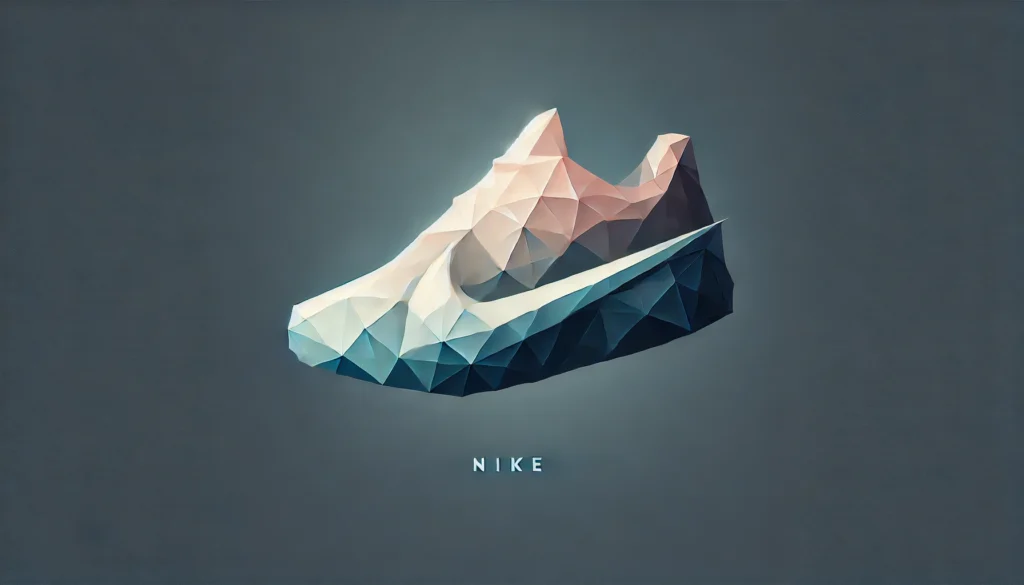The Origin and Evolution of Nike: The Global Nike Brand

Nike, one of the world’s most iconic and influential sportswear brands, had its beginnings rooted in modest ambitions. The company, initially named Blue Ribbon Sports, was founded in 1964 by Phil Knight and Bill Bowerman. What started as a small distribution company soon transformed into a global powerhouse that revolutionized the sports industry. This article explores the founding and growth of Nike, the key figures behind its success, and the innovations that propelled it to the top.

The Birth of Nike: From Blue Ribbon Sports to Global Icon
The Founding Vision: Blue Ribbon Sports
In 1964, Blue Ribbon Sports was established by Phil Knight, a track athlete and business graduate from the University of Oregon, and his coach, Bill Bowerman. The pair shared a vision of creating lightweight, high-performance athletic shoes that would enhance athletes’ capabilities. Knight’s entrepreneurial spirit combined with Bowerman’s deep understanding of athletes’ needs led them to import and distribute Japanese running shoes from Onitsuka Tiger, now known as ASICS, in the United States. They sold these shoes directly from Knight’s car and at athletic events, gradually building a loyal customer base.
Transition to Nike: A New Era
By 1971, Knight and Bowerman recognized the potential to develop their own line of footwear, leading to the creation of the Nike brand. Named after the Greek goddess of victory, “Nike” symbolized the company’s ambition to lead in the sports industry. They commissioned a design student, Carolyn Davidson, to create a logo for their new brand. For just $35, she designed the now-famous Swoosh, a symbol of movement and speed that would become one of the world’s most recognizable logos. The first Nike-branded shoes featuring the Swoosh logo were introduced in 1972, marking the beginning of Nike’s rise in the sports apparel market.

The Innovators: Phil Knight and Bill Bowerman
Phil Knight: The Entrepreneurial Visionary
Phil Knight, born in 1938 in Portland, Oregon, had a passion for sports and business from a young age. His experience as a track runner at the University of Oregon, under Bowerman’s mentorship, fueled his interest in athletic footwear. After completing his undergraduate studies, Knight served in the U.S. Army and later earned an MBA from Stanford University. His thesis, which proposed importing high-quality, low-cost running shoes from Japan, laid the foundation for what would become Nike. Knight’s relentless drive and innovative thinking were instrumental in transforming a small start-up into a global leader.
Bill Bowerman: The Innovative Coach
Bill Bowerman, born in 1911, was a renowned track coach at the University of Oregon, known for his dedication to improving his athletes’ performance. His constant experimentation with shoe design led to significant advancements in athletic footwear. Bowerman’s focus on making shoes lighter and more efficient resulted in the development of groundbreaking designs that set new standards in the industry. His contributions to Nike’s early product innovations were crucial in establishing the company’s reputation for performance-driven footwear.
Nike’s Key Innovations and Milestones
The Waffle Sole: A Revolutionary Design
One of Nike’s most famous innovations is the Waffle Sole, created by Bowerman in the early 1970s. Inspired by the grooves of a waffle iron, Bowerman poured rubber into the iron to create a prototype sole with enhanced grip and stability. This design was first used in the Nike Waffle Trainer, which became a significant success and helped Nike secure its place in the athletic shoe market. The Waffle Sole exemplifies Nike’s commitment to innovation and its ability to rethink conventional designs.
Nike Air Technology: Redefining Comfort and Performance
In the late 1970s, Nike introduced another groundbreaking innovation—the Nike Air technology. First featured in the 1979 Air Tailwind shoe, this technology incorporated a gas-filled unit in the shoe’s midsole, offering superior cushioning and comfort. The introduction of the Nike Air Max series in 1987, which showcased the Air unit visibly through a window in the heel, not only revolutionized shoe design but also became a cultural phenomenon. The Air Max series remains one of Nike’s most popular product lines to this day.

Strategic Partnerships and Marketing Masterstrokes
The Michael Jordan Partnership: A Game Changer
One of Nike’s most significant strategic moves was its partnership with basketball legend Michael Jordan in 1984. This collaboration led to the creation of the Air Jordan line, which became a massive commercial success and firmly established Nike in the basketball and sneaker culture. The Air Jordan brand continues to be a cornerstone of Nike’s product lineup and has inspired countless other athlete endorsements in the industry.
“Just Do It”: The Power of a Slogan
In 1988, Nike launched the “Just Do It” campaign, one of the most successful marketing campaigns in history. The slogan resonated deeply with consumers, encouraging them to push their limits and achieve their goals. It became a rallying cry for athletes and non-athletes alike and solidified Nike’s position as an inspirational and aspirational brand.
Important Milestones in Nike’s Journey
1964:
Founding of Blue Ribbon Sports
Phil Knight and Bill Bowerman establish Blue Ribbon Sports, initially acting as a distributor for Onitsuka Tiger shoes from Japan.
1971:
Rebranding to Nike and Launch of the Swoosh Logo
The company rebrands as Nike and introduces the Swoosh logo, signaling the start of its journey as an independent brand.
1972:
Launch of the First Nike Shoe
Nike releases its first shoe line featuring the Swoosh logo, including the popular Nike Cortez, helping the brand gain traction in the market.
1984:
Partnership with Michael Jordan
Nike signs a deal with Michael Jordan, leading to the launch of the Air Jordan line, which becomes an iconic product range.
1988:
Introduction of “Just Do It”
Nike debuts its “Just Do It” slogan, which becomes one of the most recognized marketing slogans worldwide.
1990:
Opening of the First NikeTown Store
Nike opens its first NikeTown store in Portland, Oregon, enhancing its retail presence and brand engagement.

Phil Knight: The Man Behind the Brand
Phil Knight’s leadership was instrumental in Nike’s growth from a small sports shoe distributor to a global sportswear giant. His willingness to take risks, coupled with his visionary approach to branding and marketing, allowed Nike to pioneer new trends in the sports industry. Beyond his role at Nike, Knight has been a significant philanthropist, donating generously to educational institutions like the University of Oregon and Stanford University. Although Knight stepped down as chairman of Nike in 2016, he remains an influential figure within the company.
The Future of Nike: Sustainability and Innovation
Commitment to Sustainability
Looking ahead, Nike is heavily focused on sustainability, aiming to reduce its environmental impact through innovations in production processes and materials. The company has set ambitious goals to achieve significant progress towards a circular economy by 2025, including using more recycled materials in its products. Nike’s future lies in balancing innovation with responsibility, ensuring that it continues to meet consumer needs while safeguarding the planet.
Digital Transformation and Direct-to-Consumer Strategy
Nike continues to invest in its digital transformation, expanding its online presence and direct-to-consumer channels. The company has enhanced the Nike app to provide personalized shopping experiences and is committed to growing its e-commerce platforms to adapt to changing consumer habits. This digital push is key to Nike’s strategy of staying ahead in an increasingly competitive retail environment.
Expanding into Emerging Markets
Nike sees significant growth potential in emerging markets like China and India, where demand for sportswear is rising rapidly. The company plans to deepen its market penetration in these regions by tailoring products to local preferences and investing in targeted marketing campaigns. Expanding its presence in these markets will be crucial for Nike’s continued global dominance.
Promoting Diversity and Inclusion
Nike is also committed to fostering diversity and inclusion across its business operations. The company aims to enhance diversity within its workforce and supply chains, recognizing that a diverse and inclusive environment drives innovation and creativity. This commitment is not only a social responsibility but also a strategic imperative that aligns with Nike’s long-term vision.
5 Fascinating Facts About Nike
1. Nike Started as a Distributor for Japanese Shoes:
Originally, Nike (then Blue Ribbon Sports) was founded to distribute Japanese Onitsuka Tiger shoes in the U.S. It was only later that the company decided to develop and sell its own line of athletic footwear.
2. The Swoosh Logo Cost $35:
The iconic Nike Swoosh logo was designed by a graphic design student, Carolyn Davidson, for just $35. Today, it is one of the most recognizable logos in the world.
3. The Waffle Sole Was Inspired by a Waffle Iron:
Co-founder Bill Bowerman created Nike’s famous Waffle Sole by experimenting with rubber in his wife’s waffle iron, leading to a groundbreaking shoe design.
4. Named After the Greek Goddess of Victory:
The name “Nike” is derived from the Greek goddess of victory, symbolizing the company’s mission to help athletes worldwide achieve their goals.
5. Nike Air Technology Revolutionized the Industry:
Introduced in 1979, Nike Air technology fundamentally changed the sports shoe industry by providing superior cushioning and comfort, becoming particularly popular among runners.

Conclusion: The Legacy and Future of Nike
From its humble beginnings as a distributor of Japanese running shoes, Nike has grown into a global sports empire, revolutionizing both the sports and fashion industries. Through continuous innovation, strategic partnerships, and iconic marketing campaigns, Nike has dominated the market and influenced how people engage with sports and style. Today, with a strong focus on sustainability, digital transformation, and global expansion, Nike is well-positioned to lead the future of sportswear and beyond.